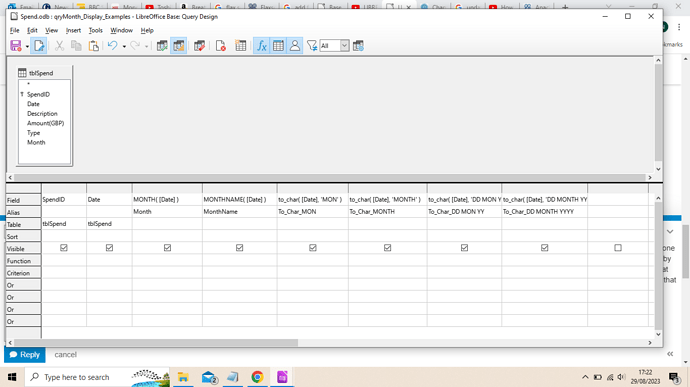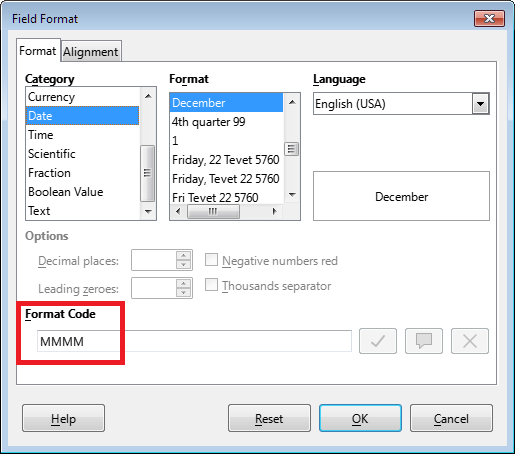My system info is :
Version: 7.5.5.2 / LibreOffice Community
Build: caf8fe7424262805f223b9a233
Environment: CPU Threads: 4;OS: Windows 10.0 Build 19405
User Interface: UI render: Skia/Raster; VCL:win
Locale: en.GB (en_GB); UI: en-GB
Misc Calc: threaded
I seem to remember being able to do this in Access. Edit: just found a video describing how to add a Calculated Column in Access. That’s essentially what I want to do in Base.
If I have a Table with a date field called ‘D’ (DD/MM/YY) and another field called ‘DM’ (text), is there a way, each time a new record is created in that table, for field DM to be updated with the month part in field D.
So each time a new record is created and field D becomes, say, 23/08/23 then field DM automatically becomes August.
I’m talking about this happening at table level, no query or SQL needed. THanks.





